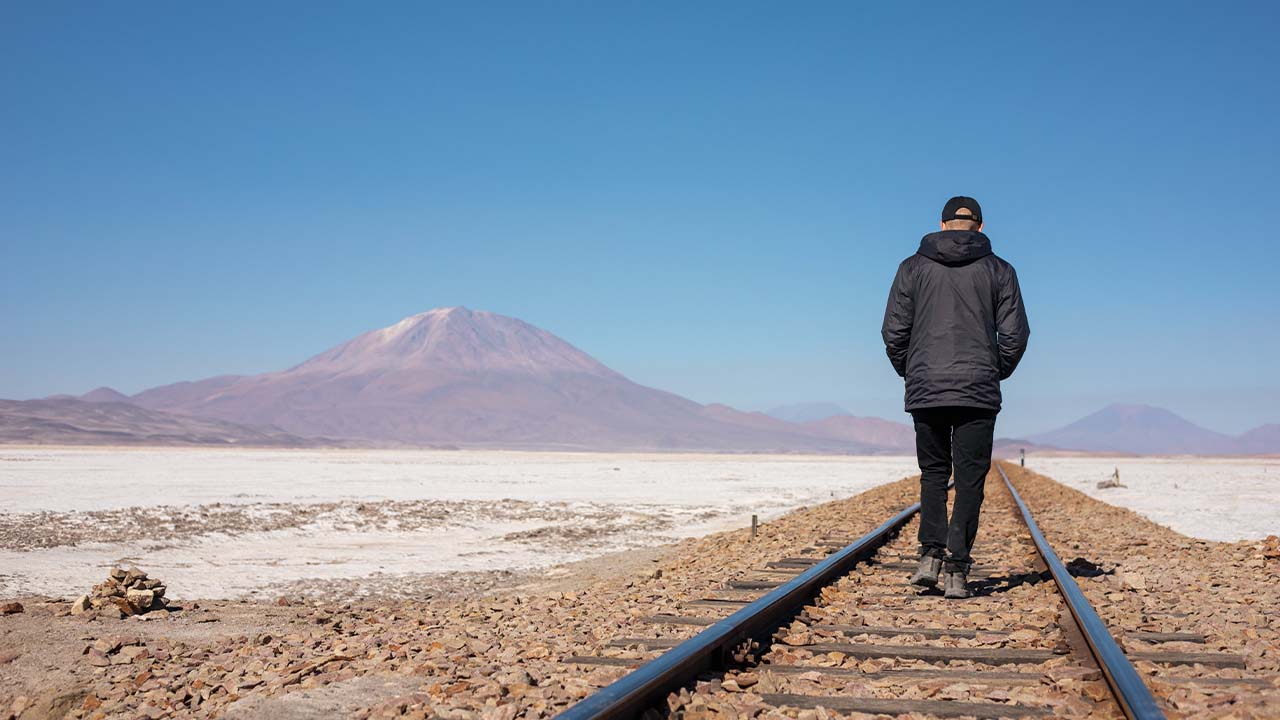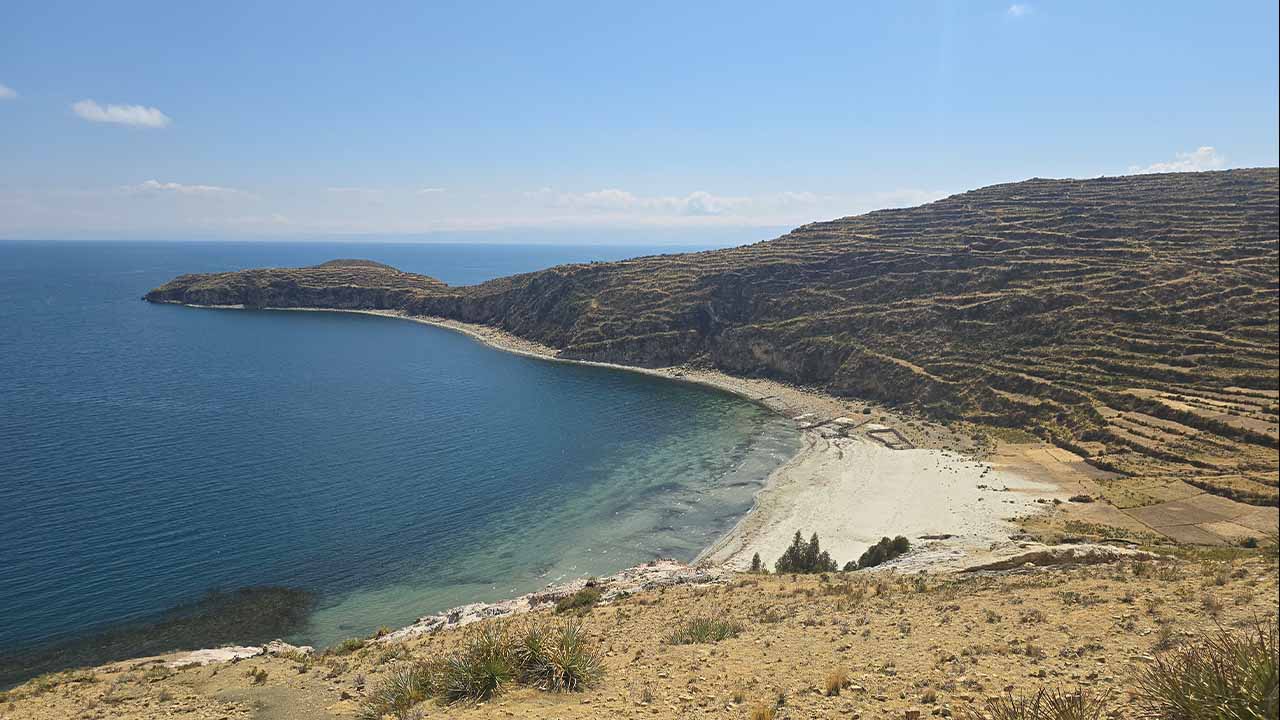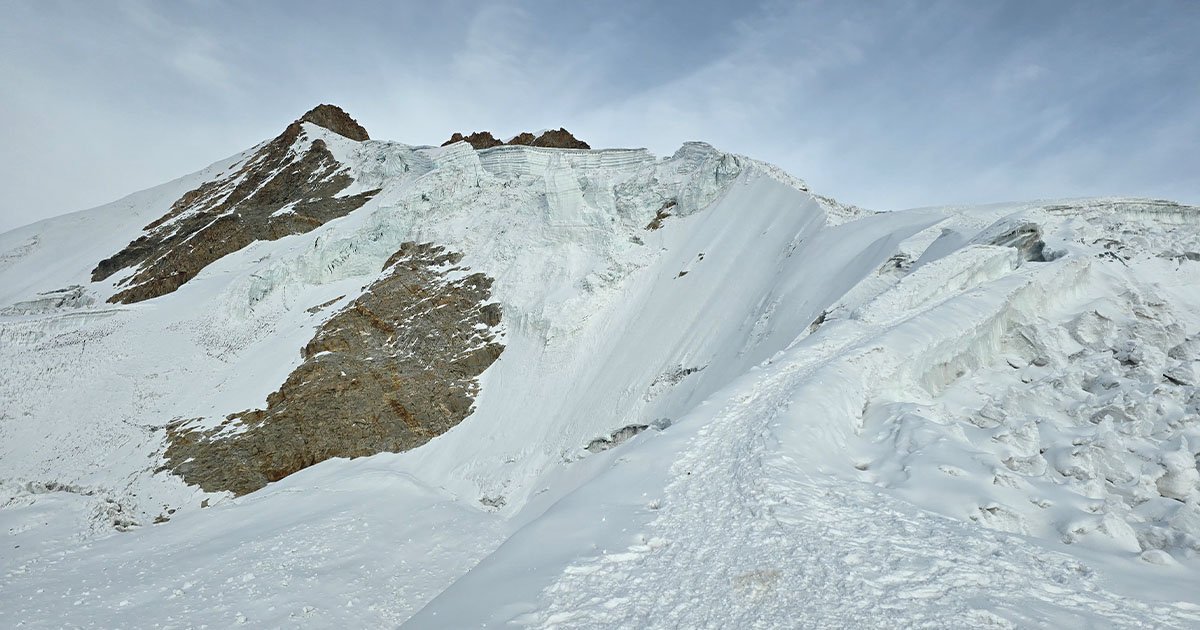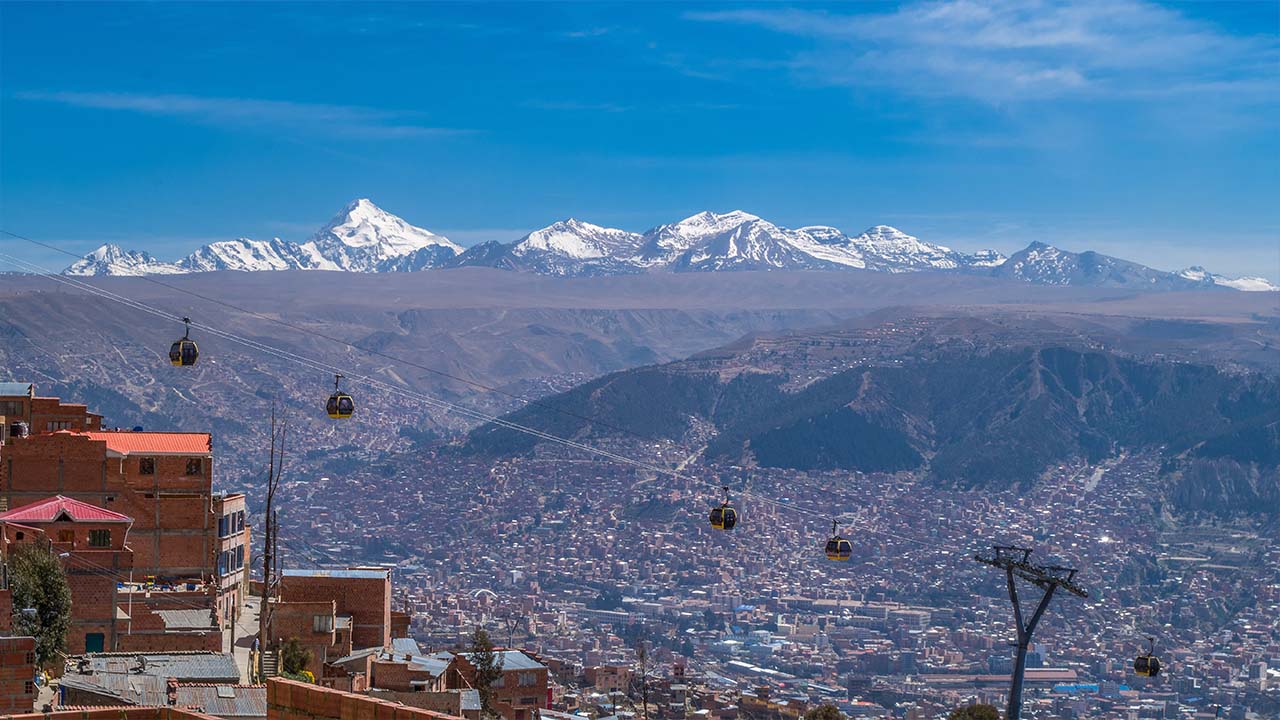
La Paz, Bolivia’s administrative capital, is truly unique. Located in a valley surrounded by the Andes Mountains, it reaches an impressive altitude of 3,650 meters above sea level. Famous for its lively culture, vibrant markets, and distinct landscape, La Paz blends tradition and modernity, making it an essential stop in South America.
While this guide provides crucial information to help with your plans, please remember that countries often update their rules, including visa requirements. So, double-checking the latest facts and details is always a good idea.
How to Get to La Paz
The city is operated by El Alto International Airport (LPB), one of the highest airports in the world. The airport is approximately 10 kilometers from the city center, making it a relatively short drive. Direct flights are available from major cities in South America and select international destinations. Alternatively, you can reach La Paz by bus from other Bolivian cities or neighboring countries such as Peru and Chile. Roads can be challenging, so prepare for long travel times.
Visa Requirements
If you plan to visit Bolivia as a tourist, visa requirements depend on your nationality. Citizens from many South American countries typically do not need a visa. However, travelers from other regions might need one. The requirements can vary, so it’s highly recommended to consult the official Bolivian migration website or contact your nearest Bolivian embassy or consulate to ensure you have the correct and updated information.
Essential Documents
The documents every traveler needs to have, regardless of whether they require a visa or not, are:
- Valid Passport: Ensure your passport has at least six months of validity.
- Tourist Visa: If required, obtain a tourist visa by completing the Visa Affidavit form and providing necessary documents such as a passport-sized photograph, proof of accommodation, round-trip ticket, and evidence of economic solvency.
- Proof of Onward Travel: Booked and paid ticket for your departure from Bolivia, such as a return or onward ticket.
- Proof of Residency: A hotel booking or a letter confirming your stay.
A yellow fever vaccination certificate may be required, especially if you plan to travel to other parts of Bolivia.
While travel and health insurance aren’t compulsory, they are strongly advised for your safety and peace of mind. If you’re looking for an affordable option, we recommend SafetyWing. We’ve put together a comprehensive guide to assist you in choosing the right travel insurance.
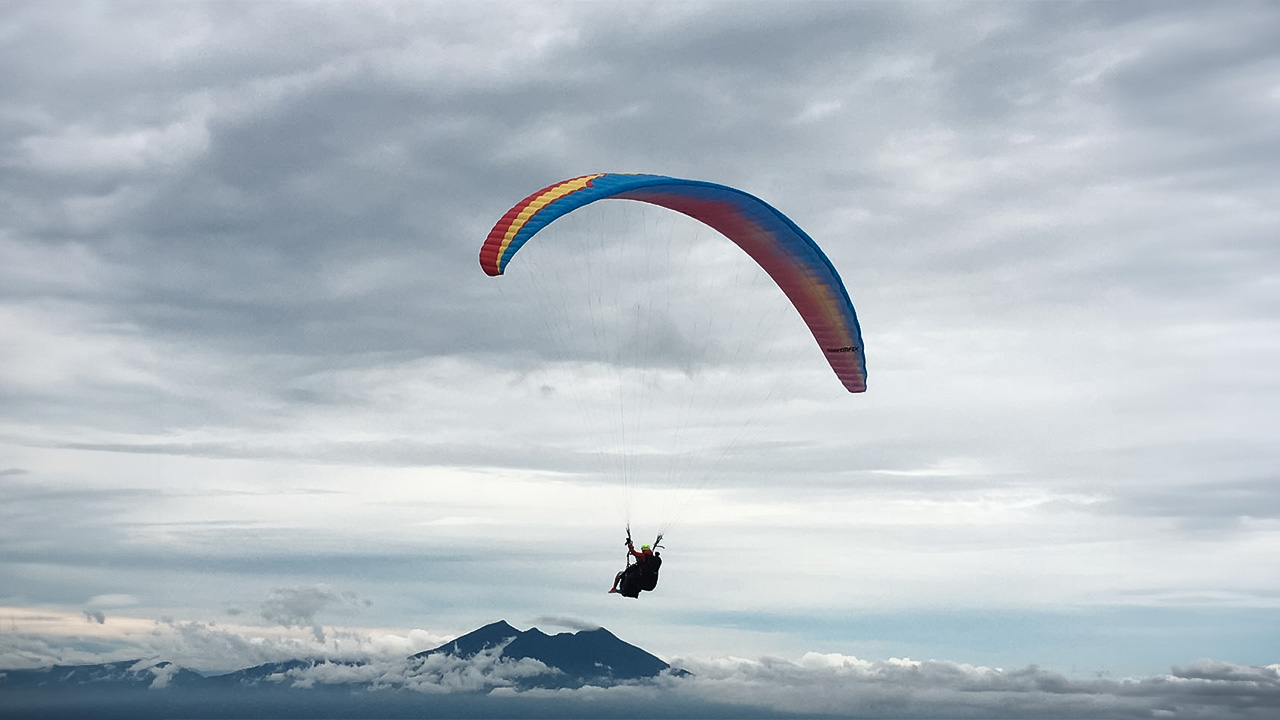
Travel Insurance Simplified: Your Guide to Safe and Secure Trips
Find affordable options and why travel insurance is essential for your next trip. Stay safe and enjoy your travels without unexpected troubles!
Language
Spanish is the primary language spoken. Indigenous languages like Aymara and Quechua are also widely spoken, but I’ve never met anyone who couldn’t understand Spanish. Knowing some basic Spanish phrases can be helpful when exploring the city and engaging with locals, but you can still manage without knowing Spanish. Just be aware that English isn’t commonly spoken, so it’s wise to have a translation app or use gestures as necessary.
Currency
Bolivia’s official currency is the Bolivian Boliviano (BOB). ATMs are widely available in La Paz, and credit cards are accepted in most hotels, restaurants, and larger stores. However, carrying some cash for markets and smaller establishments is advisable. Note that some places, particularly tour companies, may charge a fee for using credit cards, although this is uncommon in restaurants.
Getting Around in La Paz
Car Rentals
Car rentals are available, but driving in La Paz can be challenging due to narrow streets, steep inclines, and heavy traffic. It’s best for experienced drivers.
Uber & Taxi Services
Uber is available in La Paz and is considered the safest option nowadays. I’ve used it, and it worked perfectly. I recommend it over traditional taxis. The only two times I took a cab, the drivers tried to increase the price at the end of the ride because I was a foreigner, so I recommend against using street taxis.
Public Transportation
While I never tried the buses because I found them chaotic and not worth the price, the cable cars were amazing. They are safe, budget-friendly, efficient, and widely used by locals and travelers alike. The cable car system is highly recommended if you’re looking for a reliable public transportation option in La Paz.
Walking Around
Walking is a great way to explore the city, especially in the central areas, and it was my primary mode of transportation. I found walking around, even at night, in well-known and secure neighborhoods safe, and It’s common to see locals walking at all hours. However, I avoided venturing into areas I wasn’t familiar with, and I consider myself street-smart.
For added safety, it’s wise to be discreet with your belongings, stay aware of your surroundings, avoid walking alone, and avoid quiet or poorly lit areas. Being cautious is always a good idea.
What to Wear
Layered clothing is essential due to La Paz’s variable weather. Days can be warm under the sun, but temperatures drop significantly at night due to the high altitude. I didn’t notice any strict dress code during my stay, and people didn’t seem to care much about what I was wearing. So, I wouldn’t overthink it and I’d just wear what you’re comfortable in.
Best Time to Visit
The best time to visit La Paz depends on the activities you plan to do. Most visitors don’t come solely for La Paz but to experience Bolivia’s other attractions, so it’s best to check the season for your intended activities and align your visit accordingly. From May to October, the dry season is ideal for hiking with clear skies and stable weather. When visiting Salar de Uyuni, you’ll find two distinct experiences: the dry season offers the iconic hexagonal salt patterns, while the wet season (December to April) creates a mirror-like reflection on the salt flats. Plan your trip based on what you want to see and do!
Safety
I found La Paz to be relatively safe. Petty crimes like pickpocketing can occur, especially in crowded areas and on public transport, so stay vigilant. Avoid walking alone at night in unfamiliar areas, and be cautious with your belongings. Of all the places I’ve traveled to, Bolivia was one of the safest I’ve felt. I’ve never met a traveler who disagreed with me on this.
Protests
Bolivia has its share of political instability, and La Paz has historically been the site of these protests. While most demonstrations are peaceful, they can occasionally escalate, so staying informed about current events is essential.
During my stay, Bolivia had a few protests and roadblocks, which forced me to change my tour plans unexpectedly. I received mixed advice when speaking with locals, ranging from “Don’t worry too much about the protests” to “We might see a civil war soon”. Even though there were protests during my visit, I didn’t see any signs of danger near where I was staying, which was outside the protest zones. Most tourists I met weren’t even aware that protests were happening, so it’s best to stay informed but not overly concerned.
Natural Disasters
It’s unlikely that you will encounter natural disasters while visiting La Paz. While earthquakes can occur, they are rare and typically minor, with no fatalities reported in recent years. Heavy rainfall may happen during the wet season, which could cause landslides in specific areas. It’s advisable to monitor weather conditions, particularly when traveling in mountainous regions, but there’s no need to worry excessively.
Health Concerns
The most concerning health issue in La Paz is the altitude. At over 3,650 meters above sea level, many visitors experience symptoms of altitude sickness, such as headaches, shortness of breath, and fatigue. To mitigate this, staying hydrated, eating healthy food, and avoiding strenuous activities on your first day is essential. La Paz has good medical facilities if needed, but travel insurance is recommended for peace of mind.
Where to Stay
The city offers accommodations for all budgets, from luxury hotels to budget hostels. Where you stay can significantly enhance your experience, so choosing the right neighborhood is essential:
- Sopocachi: Known for its trendy vibe, this neighborhood is perfect for young travelers and those seeking a lively atmosphere. I stayed here for two months and wouldn’t recommend staying anywhere else. It’s safe, convenient, and full of great cafes and restaurants.
- The Historic Center: Ideal for those who want to be close to the city’s main attractions and markets. It’s bustling and full of character, though it can be noisier.
- Zona Sur: A wealthy and quieter area known for its upscale restaurants and modern amenities. It’s an excellent choice for those seeking comfort and a more relaxed environment.
If you’re a digital nomad or a traveler looking to connect with others, consider staying at Selina in Sopocachi. It’s a popular choice among the community, offering shared spaces and activities. While I think private rooms are overpriced, it’s a reasonable option if you don’t mind staying in a shared room.
Electrical Plugs and Outlets
Like the rest of Bolivia, La Paz predominantly uses Type A and Type C electrical outlets. It’s advisable to bring a universal adapter to ensure compatibility.

Tap Water Quality
Tap water in La Paz is not safe to drink. Always use bottled water or boil water before consumption.
Emergency Numbers
| Service | Phone Number |
|---|---|
| Police | 110 |
| Ambulance | 118 |
Share This Article
What to read next
Disclaimer: This post may include affiliate links. We may receive a commission at no extra cost to you if you click one of them. Thank you for your support!
